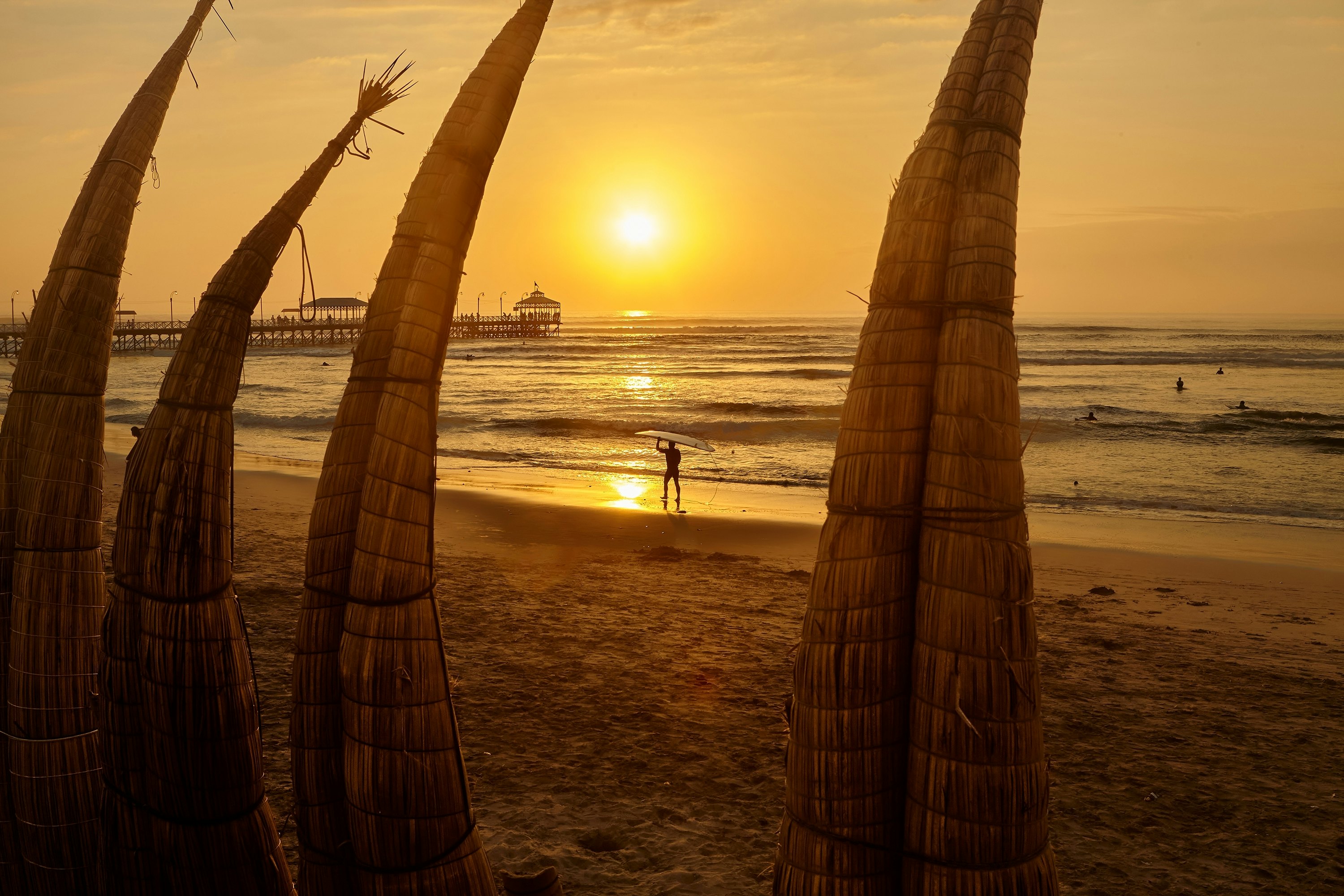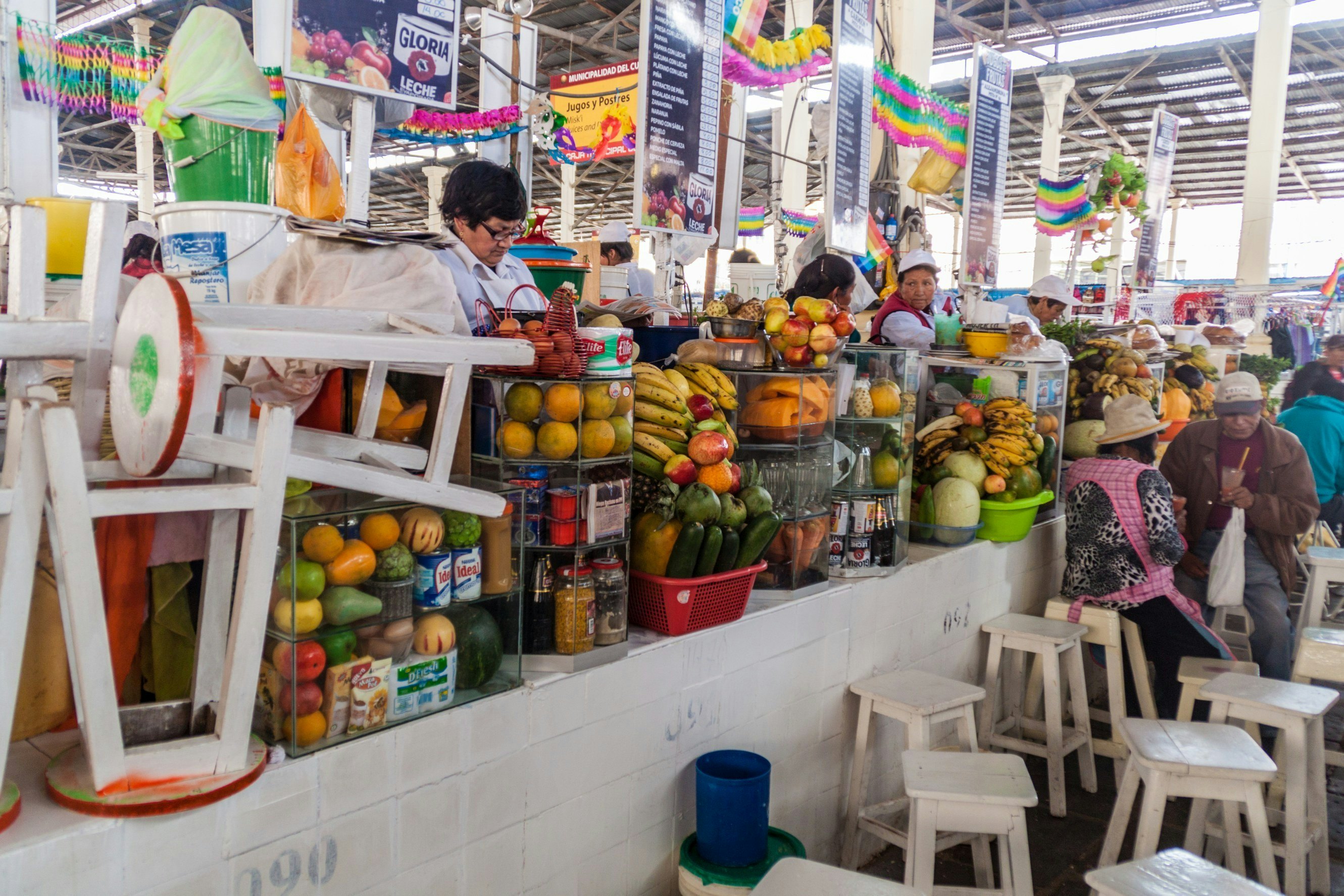

Los Organos, on the north coast of Peru. BETO SANTILLAN/Shutterstock
Peru has long been a top destination for international backpackers on a budget, as the cost of living is comparatively low for travelers from the US or Europe.
Over the past two decades, the nation's induction into gastronomic fame has sparked a fervor in travelers, nearly equal to that for Machu Picchu. As a result, Peru now has plenty of options for luxury travelers, but also numerous ways for visitors to avoid needlessly burn through their wallets.
Get the most out of your trip to Peru – be it eating, sightseeing or commuting – while spending the least with the following tips for touring Peru on a budget.
Daily costs
Hostel room: S37 to S150 nuevo soles ($US$ 10.36 to US$42)
Basic room for two: S75 to S300 (US$ 21 to US$84)
Self-catering apartment (including Airbnb): S75 to S335 (US$21 to US$94)
Public transport ticket: S1 to S4 (US$0.28 to US$1.12)
Coffee: S4 to S11 (US$1.12 to US$3.08)
Sandwich: S8 to S22 (US$2.24 to US$6.16)
Dinner for two: S37 to S130 (US$10.36 to US$36)
Beer/pint at the bar: S8 to S15 (US$2.24 to US$4.20)
Pisco sour: S18 to S41 (US$5.04 to US$11.48)
Ceviche: S11 to S56 (US$3.08 to US$15.68)
Average daily cost: S93 to S245 (US$26 to US$69)

Get your Pacific fix at lesser-known beach towns
Lima attracts travelers with its stunning coastal pathway that offers direct access to the Pacific Ocean, but the city’s high prices will quickly soak up your cash.
Catch a wave along Peru’s 2414km (1500-mile) coastline to discover equally impressive seaside destinations at a more affordable price.
In the sleepy beach town of Huanchaco you can feast on impeccably fresh ceviche and explore the nearby Chan Chan complex. On the north coast, beaches like Vichayito and Los Organos offer sunny weather year-round, a bohemian vibe and a bevy of accommodation rentals.
Make sure you’re not getting the "tourist price"
Before you pay for services or products without a fixed price – like taxis, which have no fare meters in Peru, or artisan market goods – verify with locals what a fair approximate price should be.
Sometimes vendors and drivers up the price because they see an opportunity to do so based on your foreign accent or broken Spanish.
Feel free to consult the barista while waiting for your coffee or the receptionist at your hotel or hostel: Peruvians are well aware of the unfair prices that some travelers receive.

Balance fine dining experiences with neighborhood favorites and markets
There are more than a handful of restaurants in Peru that have found their way onto international rankings, seducing you into budgeting for at least one nice meal while in Lima.
Luckily there's no need to splash out on every meal to experience Peru’s edible diversity. Familiarize yourself with menús – set lunches available in every corner of Peru, ranging from S11 to S26 (US$3.08 to US$ 7.28), and don't be intimidated by the immense open air markets where many of the top chefs do their shopping.
Take public transportation
Taxi apps are only going to work in major hubs like Lima, Arequipa and Cuzco, but you can find efficient buses and mototaxis (three-wheeled motorcycle rickshaw taxis) all over Peru.
While public transportation will typically set you back just a few nuevo soles, keep in mind that you'll potentially spend more time commuting as buses, for example, will be sticking to a route rather than heading directly to your final destination. Consider it an opportunity to sightsee and get in touch with local culture.

Opt for the cheap route to Machu Picchu
There are multiple ways to get to Machu Picchu, each with its own price tag and unique experience.
The cheapest option is the Hydroelectric Route. It costs S60 (US$16.80) for a one-way fare and entails a six-hour bus ride from Cuzco to the hydroelectric station located between Santa Teresa and Aguas Calientes, which doubles as a train station.
From the hydroelectric station you will embark on a scenic, three-hour walk on a trail along the railroad tracks to reach Aguas Calientes (free of charge).
At this point, your legs will help you decide whether to take the steep, hour-long hike up to the entrance of the archaeological site at no cost or instead opt for a 10-minute bus ride for S90 (US$ 25), round trip.
Numerous minibus companies offer this service, though be aware that you will have to purchase your entrance to Machu Picchu independently from the official Machu Picchu site a month or two before your actual bus adventure (as they tend to sell out).
That said, Machu Picchu isn’t the only awe-inspiring Inca archaeological site; check out other epic hikes and historical sites in the region with the Boleto Turístico Cusco (Cuzco Tourist Ticket).
Available at the entrance to sites such as Sacsaywamán and the Moray circular terraces, this voucher will give you access to 10 archaeological sites and parks as well as a handful of museums throughout the area. The ticket costs less than S150 (US$42) and is good for 10 days upon purchase.
Don’t let a little rain keep you away
The Peruvian Amazon and Andes experience two marked seasons: dry season (May to October) and rainy season (November to April).
Snag good deals on accommodations and excursions by visiting at the tail end of the rainy season (March or April), when hotels often offer discounts to make up for the lack of tourism during the previous months.
January and March are the rainiest months – jungle treks are nearly impossible during this time due to the rise of the river, and hikes in the Andes are dangerous. Rainfall will be dissipating by April, resulting in lush landscapes and minimal tourists.
Be aware of withdrawal fees
It’s a good idea to have some cash on hand when you arrive in Peru so that you can exchange your currency to Peruvian nuevo soles at the airport to pay for your taxi, but at some point you’ll need an ATM.
As you would before any international travel, provide your bank with the dates that you’ll be visiting Peru so that you are able to withdraw cash while abroad.
Also ask your bank what transaction fees (if any) will occur each time you take out cash in Peru and if there is a withdrawal limit.
Safety tip: use ATMs located inside a bank rather than a machine on the street to avoid theft.
Travel Peru’s diverse landscapes by bus
Coast, highlands and jungle: Peru's geographical diversity is often talked about but not necessarily experienced in full by travelers due to budget constraints. True, it's a pricey adventure to explore the Andean nation by air, but if your vacation time allows, a money-saving option is to travel by land.
An hour-long flight from Lima to Cuzco can cost upward of S375 (US$105), whereas bus rides can run as low as S112 (US$31) but will take roughly 20 hours.
Well-known companies include Peru Hop (with flexible routes that operate from Lima to southern Peru) and Cruz del Sur (including 22 fixed routes throughout Peru).
Buses depart from Lima to nearly every corner of Peru, with some companies offering multi-destination routes to help you get the most of your road trip. And witnessing the geography shift from arid desert to high-altitude countryside or humid rainforest is simply priceless.

Plan with a local
Experience the real PeruLet a local expert craft your dream trip.














